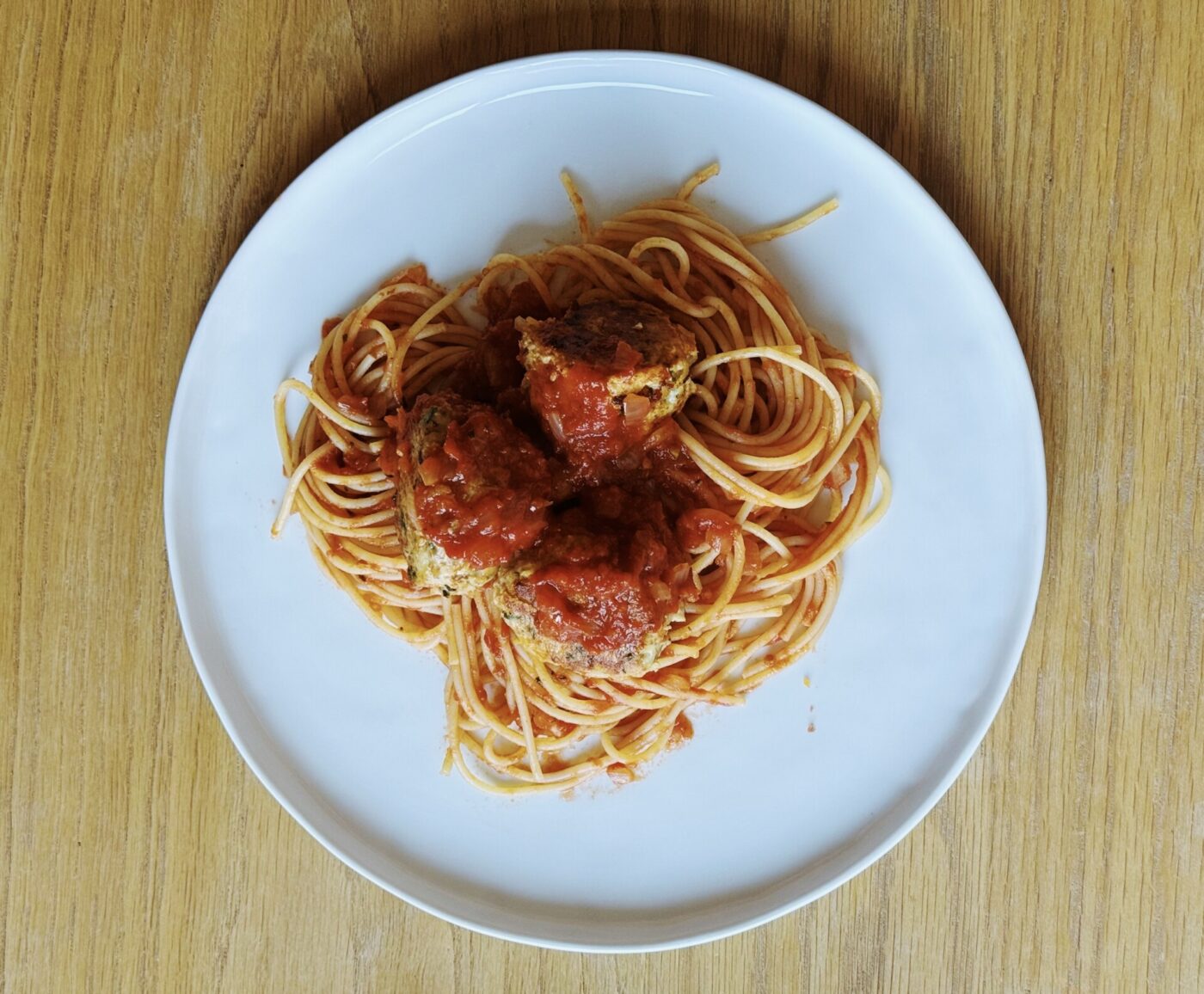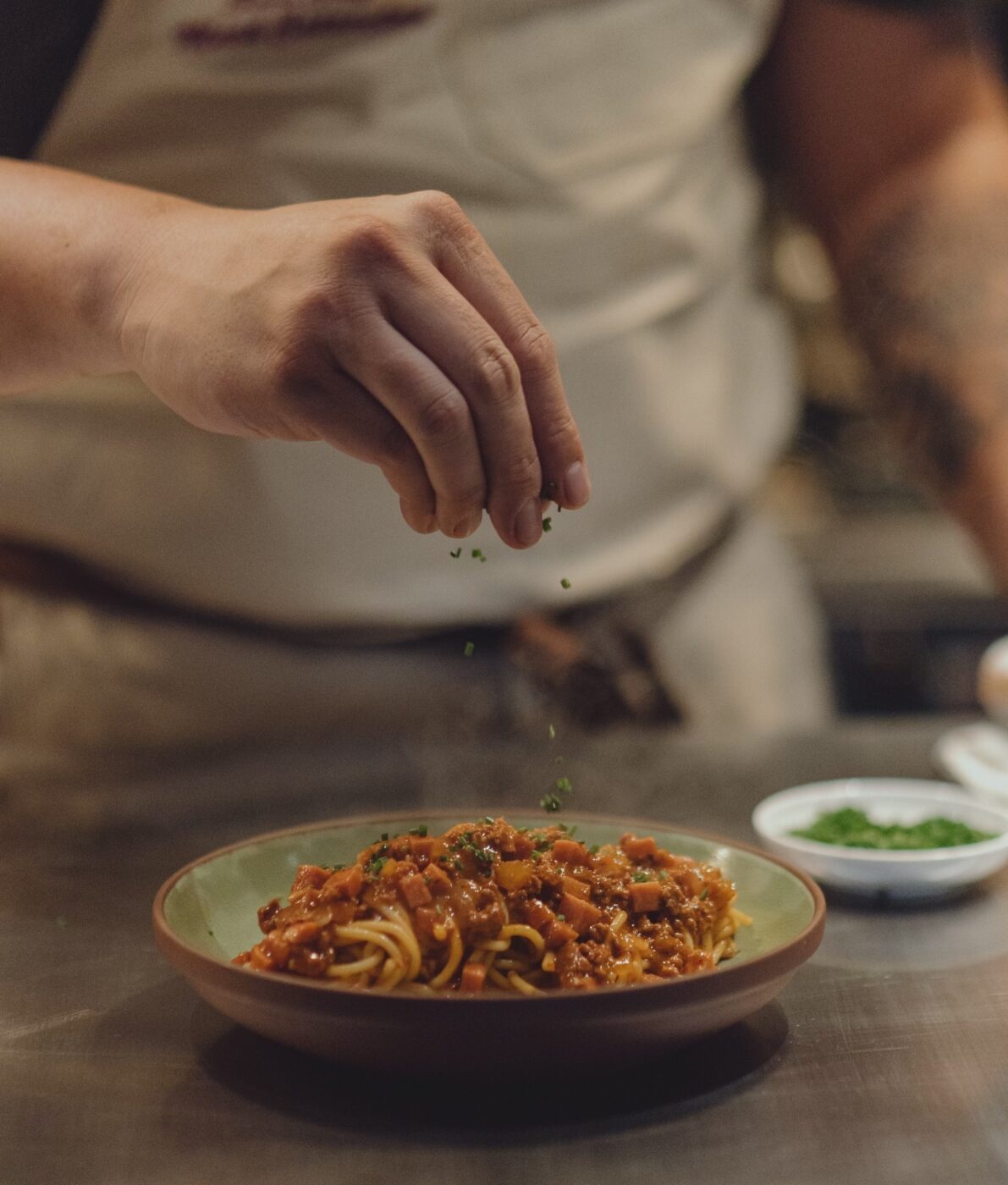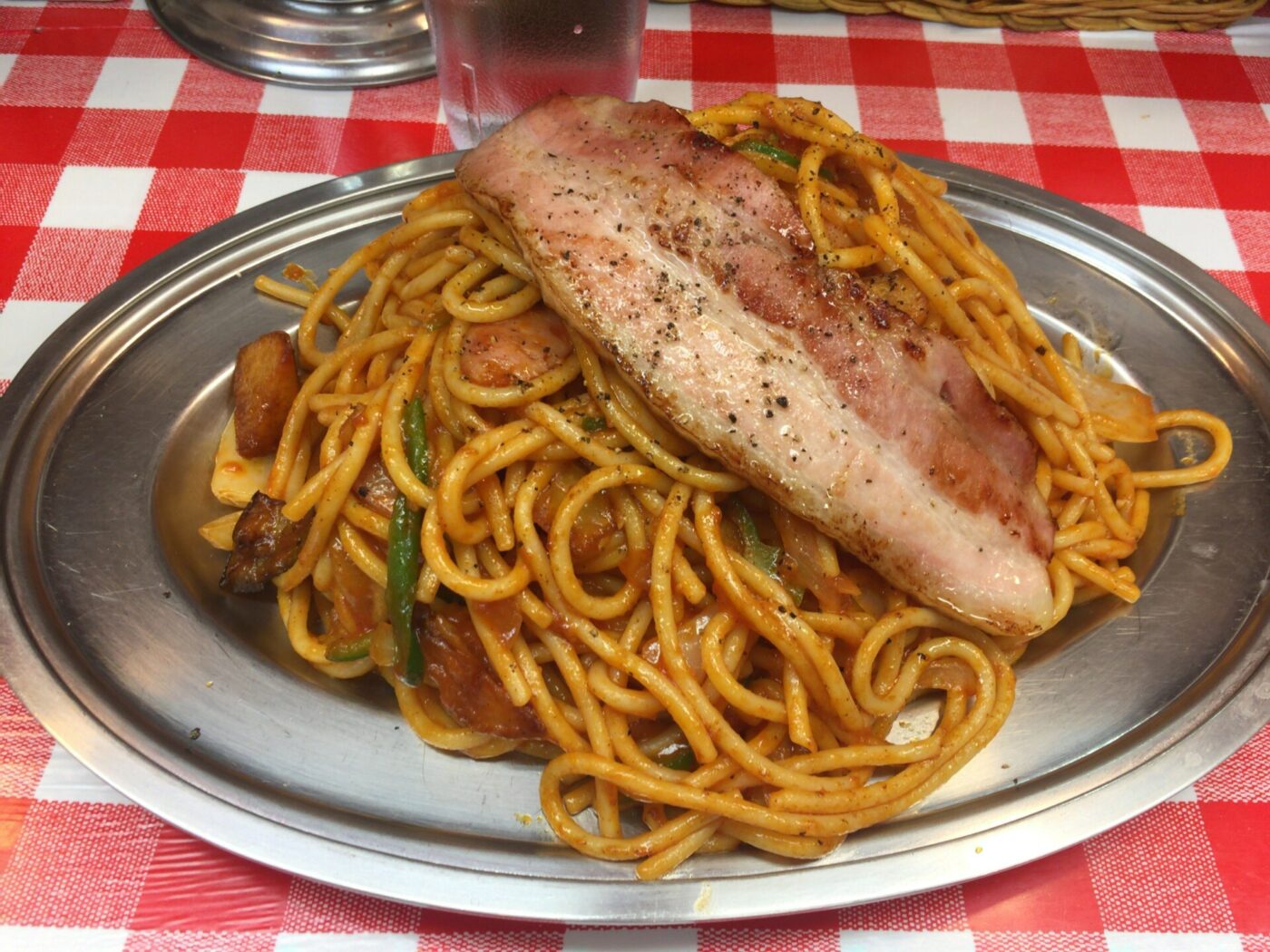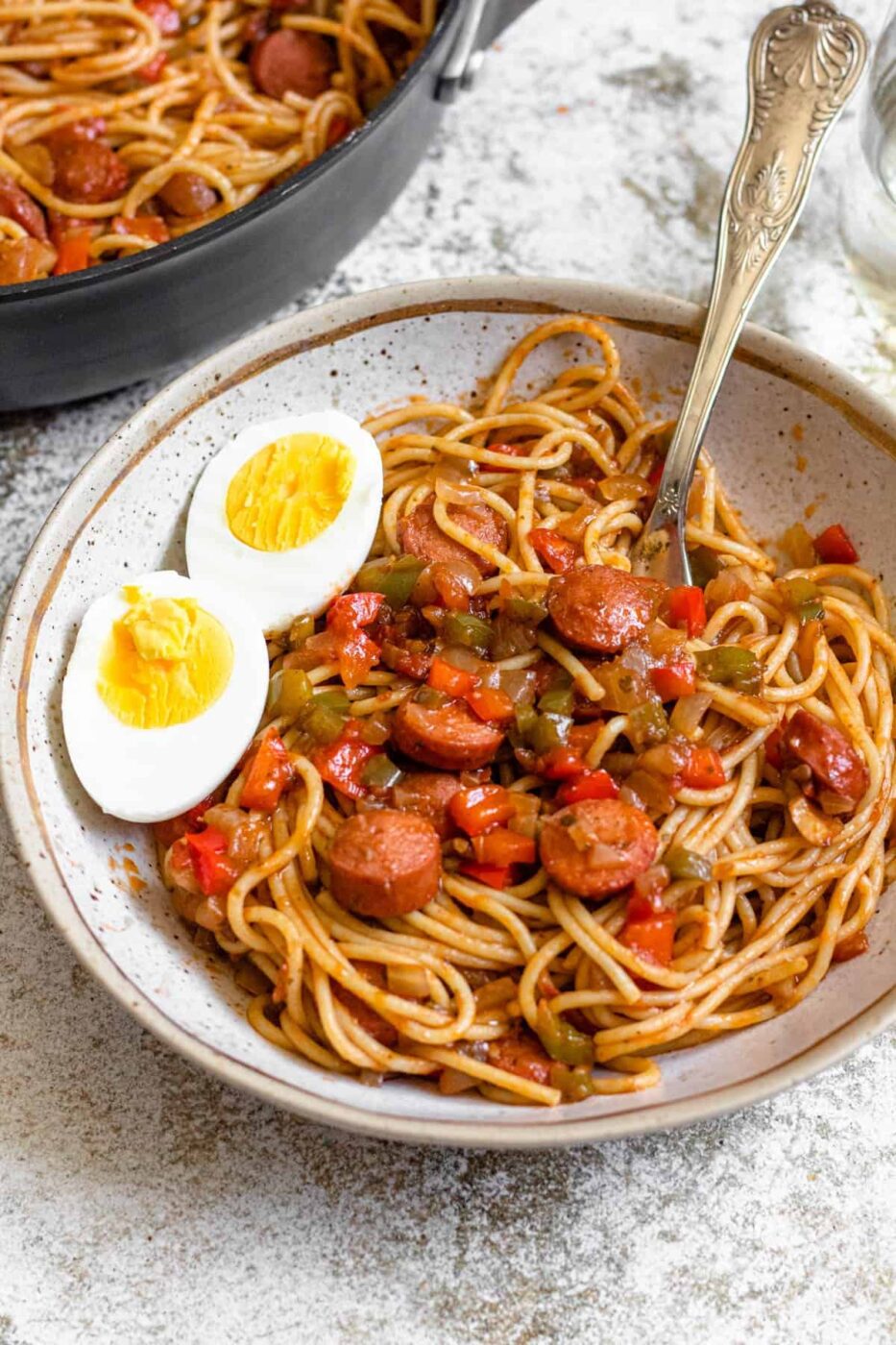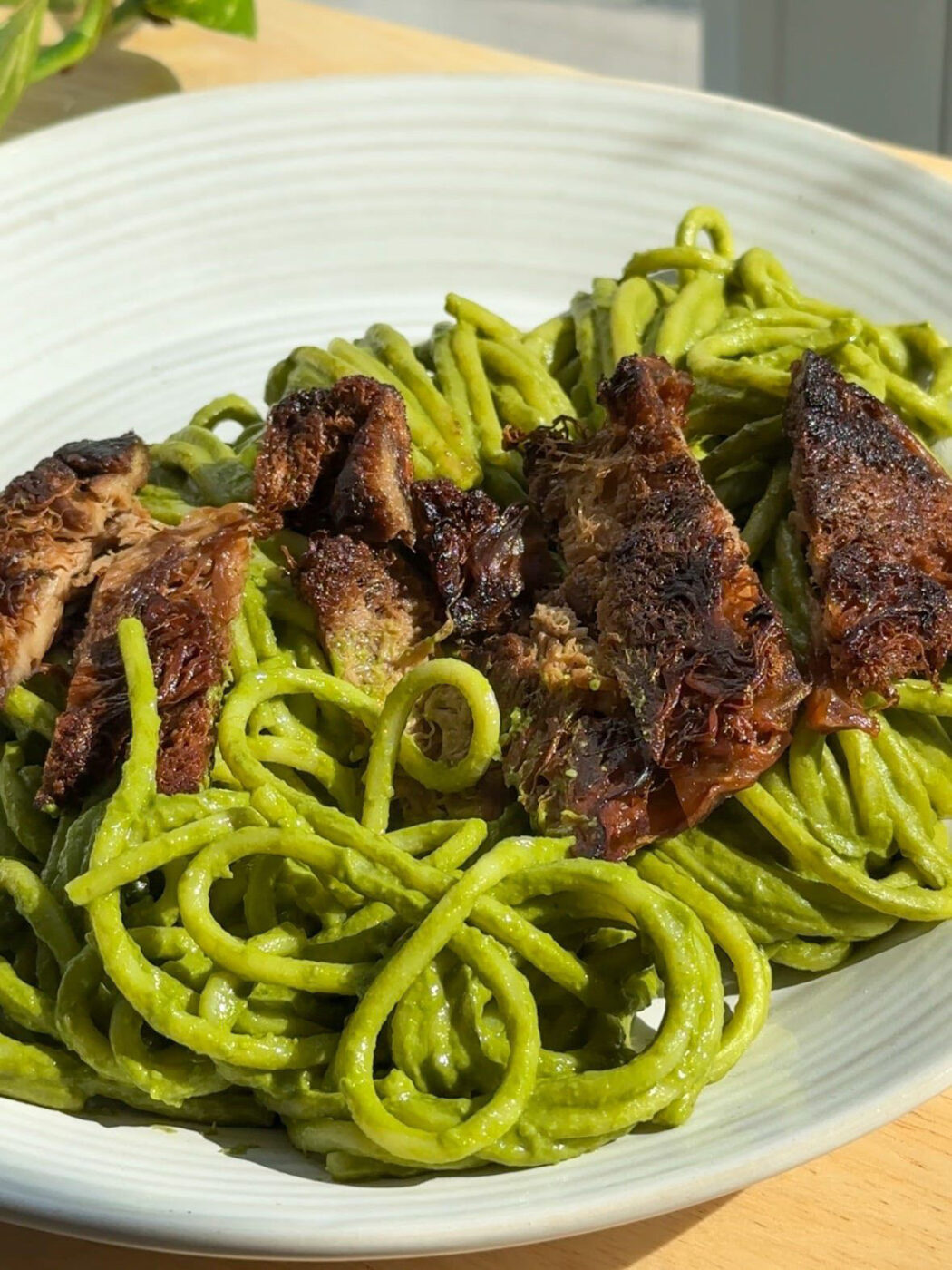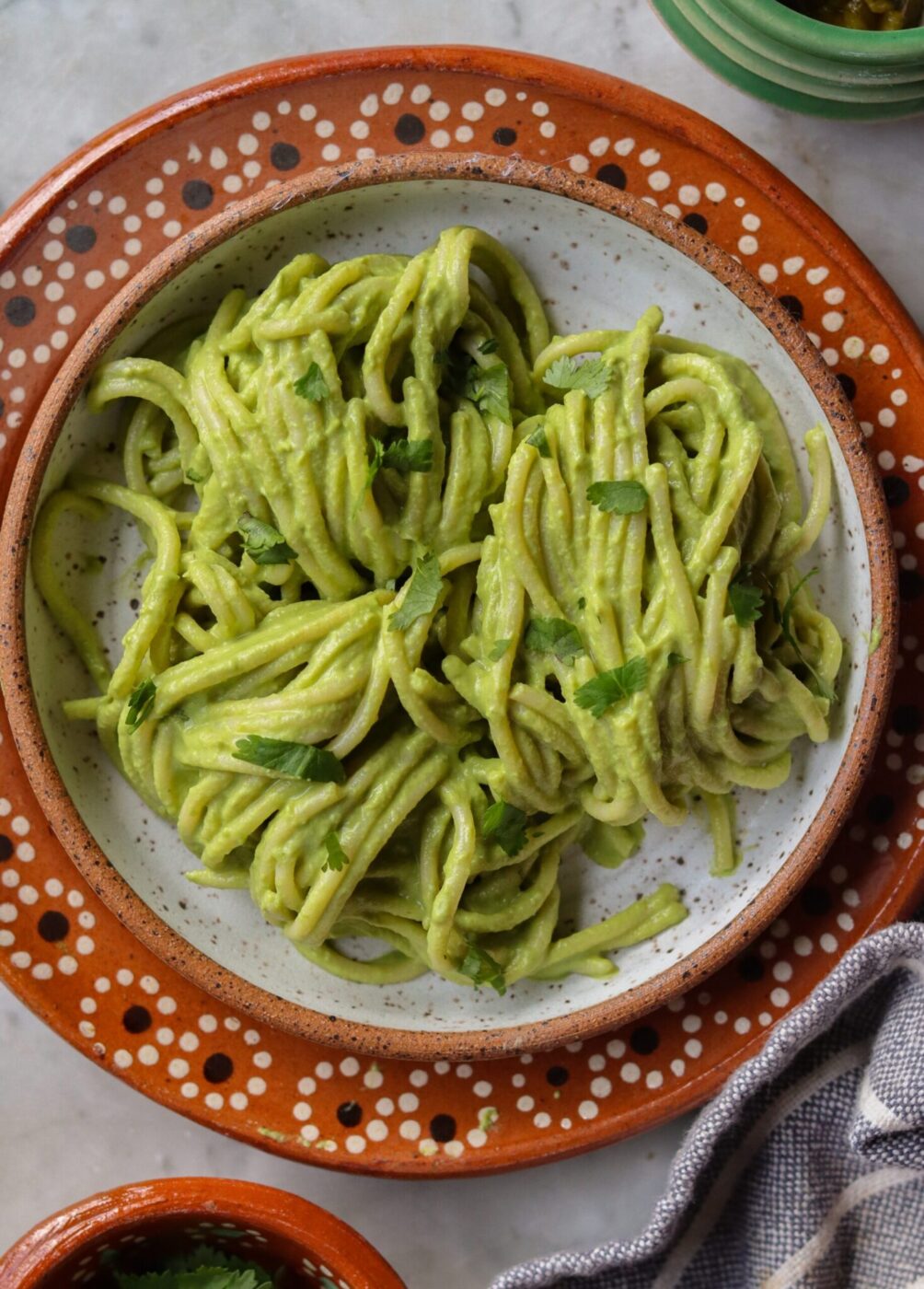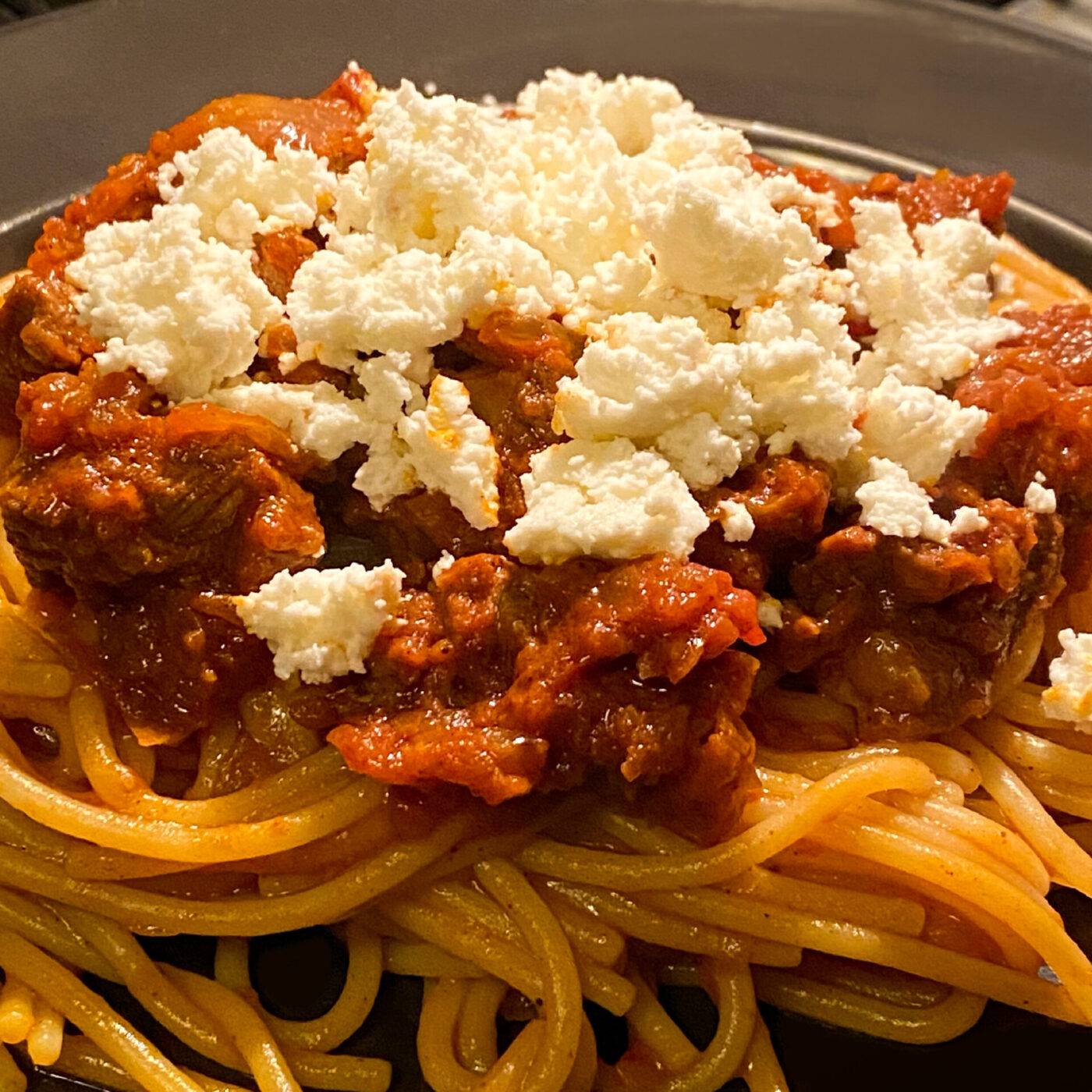Spaghetti is undoubtedly one of the most recognizable ingredients of Italian cuisine. Look no further than the ubiquity of dishes like spaghetti al pomodoro, alle vongole, carbonara or the spaghettata di mezzanotte that every Italian will turn to after a night of drinking. But not only is spaghetti the pasta of choice in almost every region of the Italian peninsula—it also happens to be the pasta of choice all around the world. Over time, many countries across the globe, whether in Asia, Africa, or South America, have developed their own versions of the dish, bringing the humble spaghetto into their local cuisines for one reason or another.
To pinpoint the origins of these dishes is to begin to make sense of the vast, rippling influence of Italian cuisine and culture: the good, the bad and the ugly. Some dishes have clear ties to one of Italy’s regional recipes, others couldn’t be further from what an Italian would try to make. In certain cases, the introduction of spaghetti to another part of the world had little to do with Italians!
However the ingredient might have ended up elsewhere in the world–whether through occupation, diaspora, proximity, or cultural exchange–there’s something to be said of how spaghetti has remained a popular home kitchen staple around the world. Dry spaghetti is the platonic ideal of a pantry staple. It’s quick to prepare and serves as the perfect blank canvas, a vessel for any kind of flavor or sauce from any part of the world. Even if not perfectly al dente, heaps of dressed spaghetti can easily serve a large family or a gathering. And perhaps to the complete chagrin of an Italian, spaghetti can be the perfect side dish alongside or underneath larger format meats.
Italians revere spaghetti as a cornerstone of cuisine—so much so that there is quite a bit of possessiveness over its preparation, many opinions about which is the right or wrong way to have it, and, we daresay, quite a lot of gatekeeping. In seeing how cooks from around the world have embraced spaghetti dishes as part of their own culinary traditions, perhaps Italians too can embrace more creativity and open-mindedness in how to enjoy the pasta: after all, “spaghetti” is rooted in the word “spago”, meaning string or cord. In considering its influence and impact, perhaps one can say that spaghetti just might be living up to its name—as the spago connecting home kitchens and communities across the globe.
Spaghetti and Meatballs (United States)
We’ll start with a classic. Contrary to popular belief, spaghetti and meatballs is not entirely Italian, but rather the invention of Italian immigrants who came to America beginning in the late 19th century (and a founding father, if you will, of Italian-American cuisine). As they found plentiful access to affordable ground meat in the United States, they began serving meatballs (polpette) atop spaghetti al pomodoro—an innovation, since polpette are traditionally eaten as an appetizer or standalone entree in Italy. The dish became a staple of the Italian-American red sauce joint, attaining a kind of cultural icon status. A popular American nursery rhyme about spaghetti goes: “On top of spaghetti, all covered with cheese / I lost my poor meatball when somebody sneezed.” And who can forget the iconic scene in The Lady and the Tramp, in which the eponymous stars share a romantic candlelit dinner over spaghetti and meatballs? Undoubtedly, the dish helped to make pasta a very popular ingredient in American households—which will be important to note later on, as Americans were a big driving force behind the introduction of spaghetti to other parts of the world.
Ingredients: Tomato sauce, meatballs made with ground beef or pork; spaghetti.
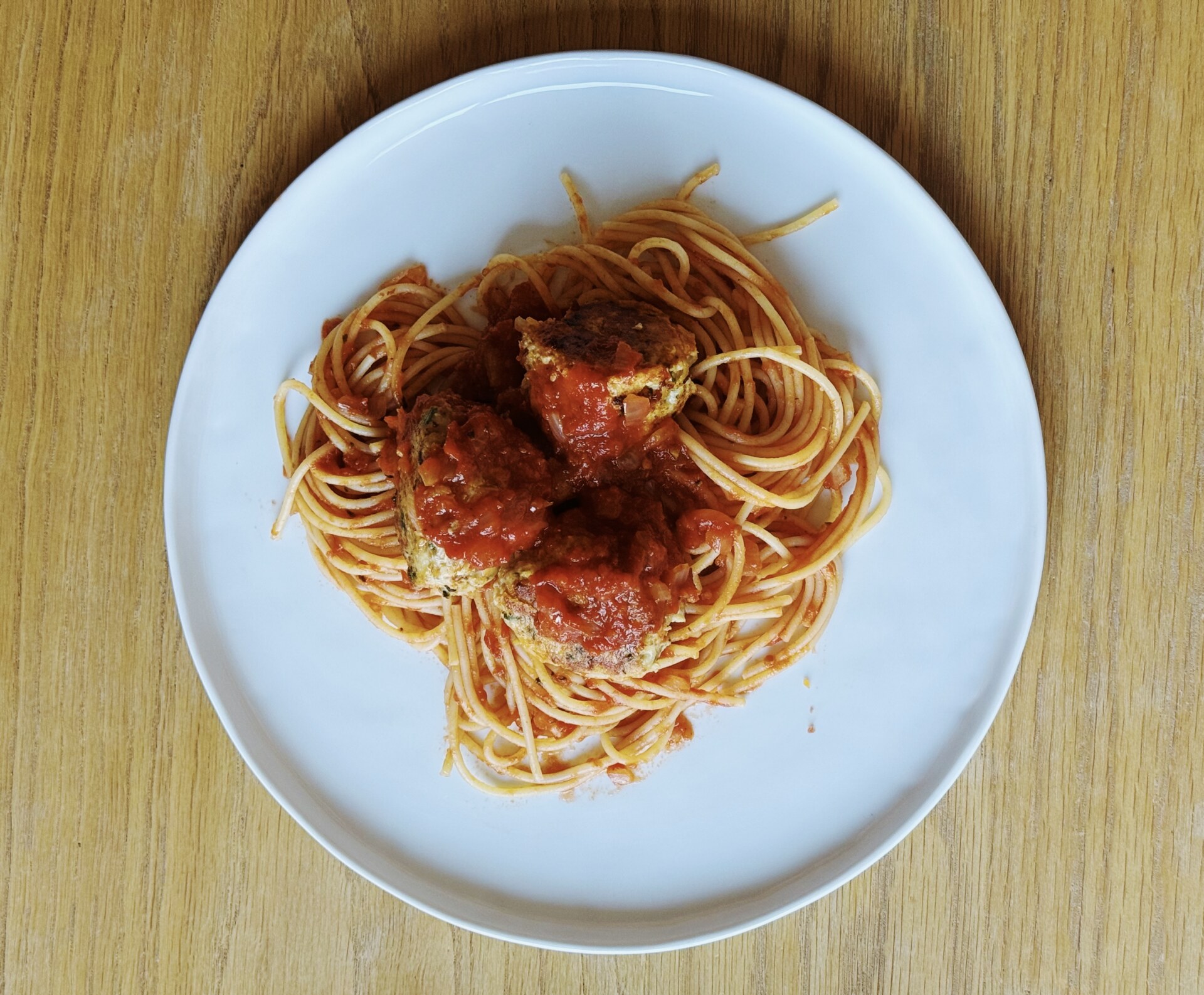
Spaghetti & Meatballs
Filipino Spaghetti with Banana Ketchup and Hotdogs (Philippines)
Spaghetti was first introduced to the Philippines not by Italians, but by Americans around the turn of the 20th century, during the U.S. occupation of the archipelago. Tomatoes were not native to the country and not in plentiful supply, but tomato products, particularly ketchup, were in high demand by the American GIs stationed in the country. As a result, a Filipino food technologist named Maria Orosa set out to solve the problem by developing a sweeter-tasting ketchup substitute that could be produced locally, containing banana, sugar, vinegar, spices, and red food coloring. The legend goes that the famed American general Douglas MacArthur had been craving spaghetti Bolognese, so his Filipino household staff used what they had on hand to try to recreate it: spaghetti, the banana ketchup, shredded american cheese, and… hotdogs. This spaghetti dish, with its curious mix of sweet, salty, and acidic flavors, caught on in popularity throughout the country for home cooks, and Filipinos began to modify it with other ingredients as they became available, like ground beef and evaporated milk. Today the dish is a staple of kids’ birthday parties and large family gatherings, often served alongside fried chicken (another modified American import). One can also find it as a revered menu item at Jollibee, the country’s most popular fast food chain.
Ingredients: Sweetened tomato sauce, banana ketchup, evaporated milk, ground beef or pork, hotdogs, cheddar or American cheese for topping; spaghetti.
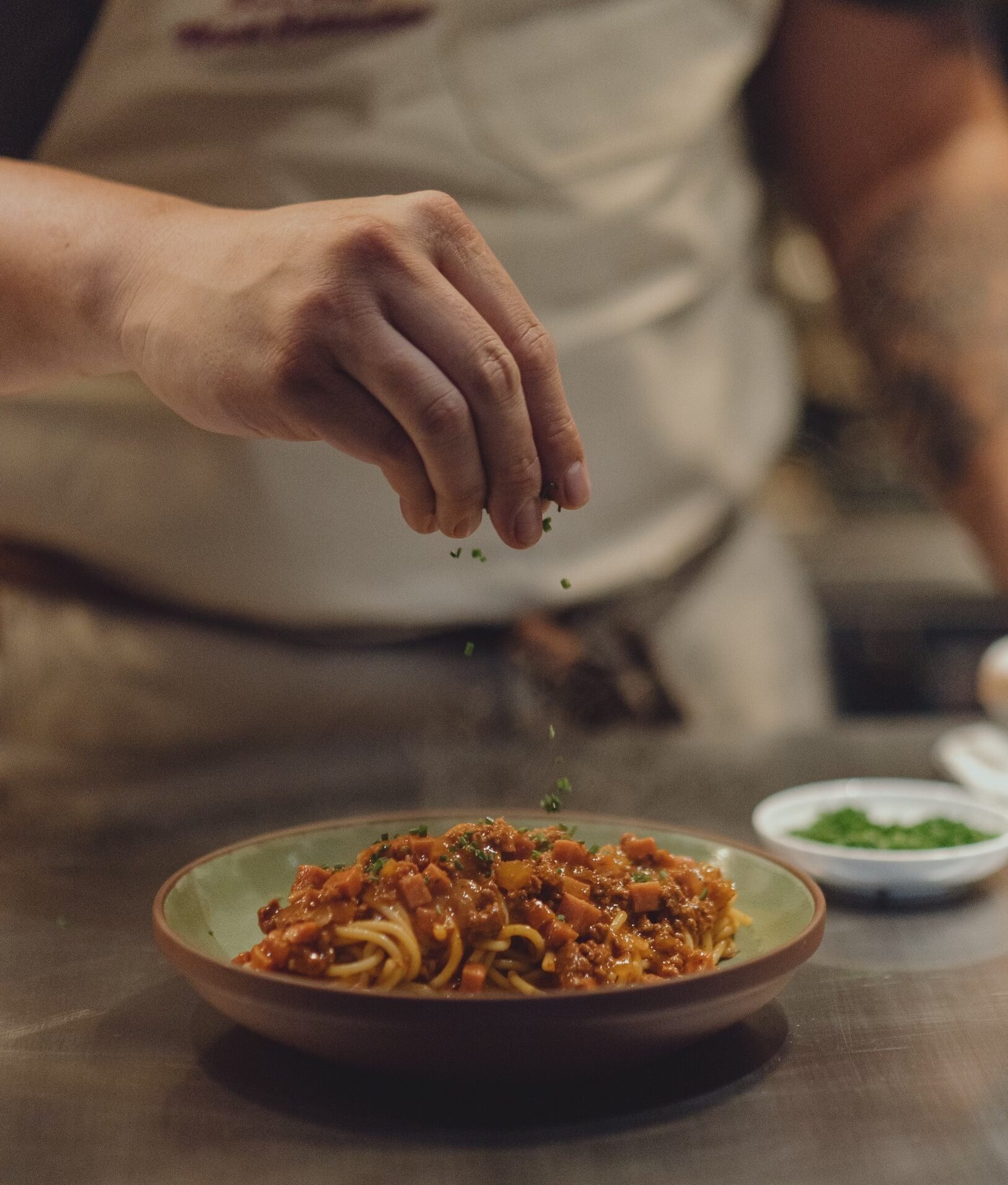
Filipino Spaghetti at @kaya.orlando; Photo by Niki Penola
Spaghetti Napolitan (Japan)
The lore of spaghetti Napolitan began at the New Grand Hotel in Yokohama sometime after World War II. Shigetada Irie, the hotel’s head chef, who was trained in French and Italian cooking styles, developed a spaghetti dish for, again, American GIs (Douglas MacArthur will also pop up in some versions of this legend), who had been eating spaghetti with just tomato ketchup and black pepper. He elevated the dish, calling it spaghetti Napolitan in an homage to Naples, using the same tomato ketchup but adding green peppers, onions, mushrooms, and bacon. The creation became a staple of Yoshoku, or western-influenced Japanese dishes, and is now regularly made in Japanese households and served in cafes throughout the country.
Ingredients: Tomato ketchup, onion, green peppers, button mushrooms, bacon; spaghetti.
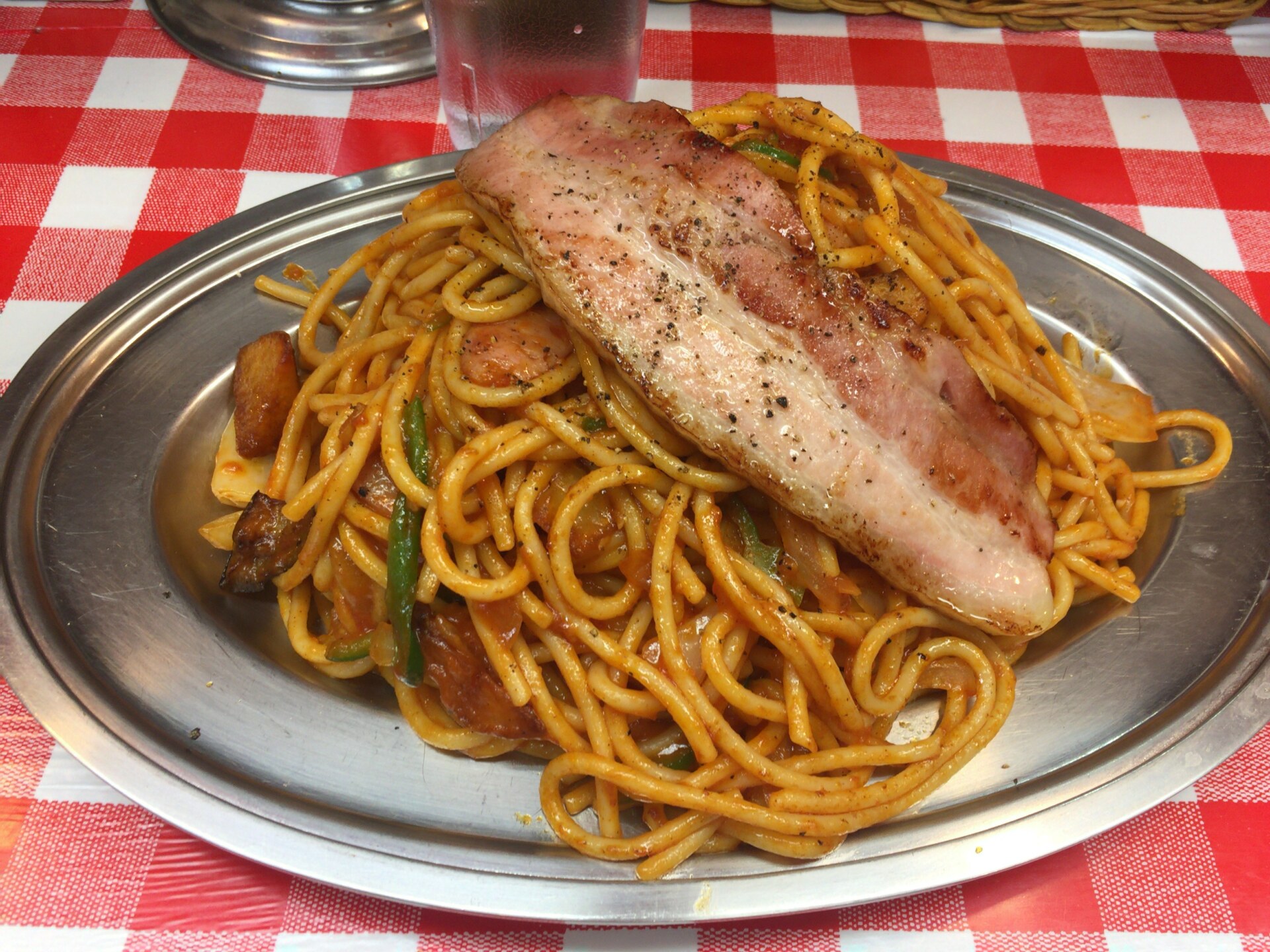
Spaghetti Napolitan; Photo by Nakashi
Espageti (Haiti)
Haiti’s culinary repertoire boasts influences from French, Spanish, and African cuisines, a melting pot of flavors born from centuries of European colonization and occupation—but like several other countries, spaghetti was first introduced to Haiti by Americans, who occupied the country between 1915 and 1934. The dish that resulted, espageti, reflects the country’s mix of gastronomic influences. The sauce typically starts with tomato ketchup or paste and aromatics like onion; it’s then punched up with spices or epis—a blend of peppers, herbs, and garlic that serve as a seasoning base for many Haitian dishes. It’s then topped with a meat of choice, like cut up sausage, hot dog, or smoked herring. Notably, espageti is served for breakfast or lunch in Haiti, alongside sliced avocado, hard-boiled eggs, or buttered bread—it’s rarely eaten at dinnertime.
Ingredients: Tomato paste or ketchup; onions and garlic; epis, or the chef’s choice of spices, sometimes scotch bonnet peppers; and either hot dogs, vienna sausages, ham, or smoked herring; spaghetti.
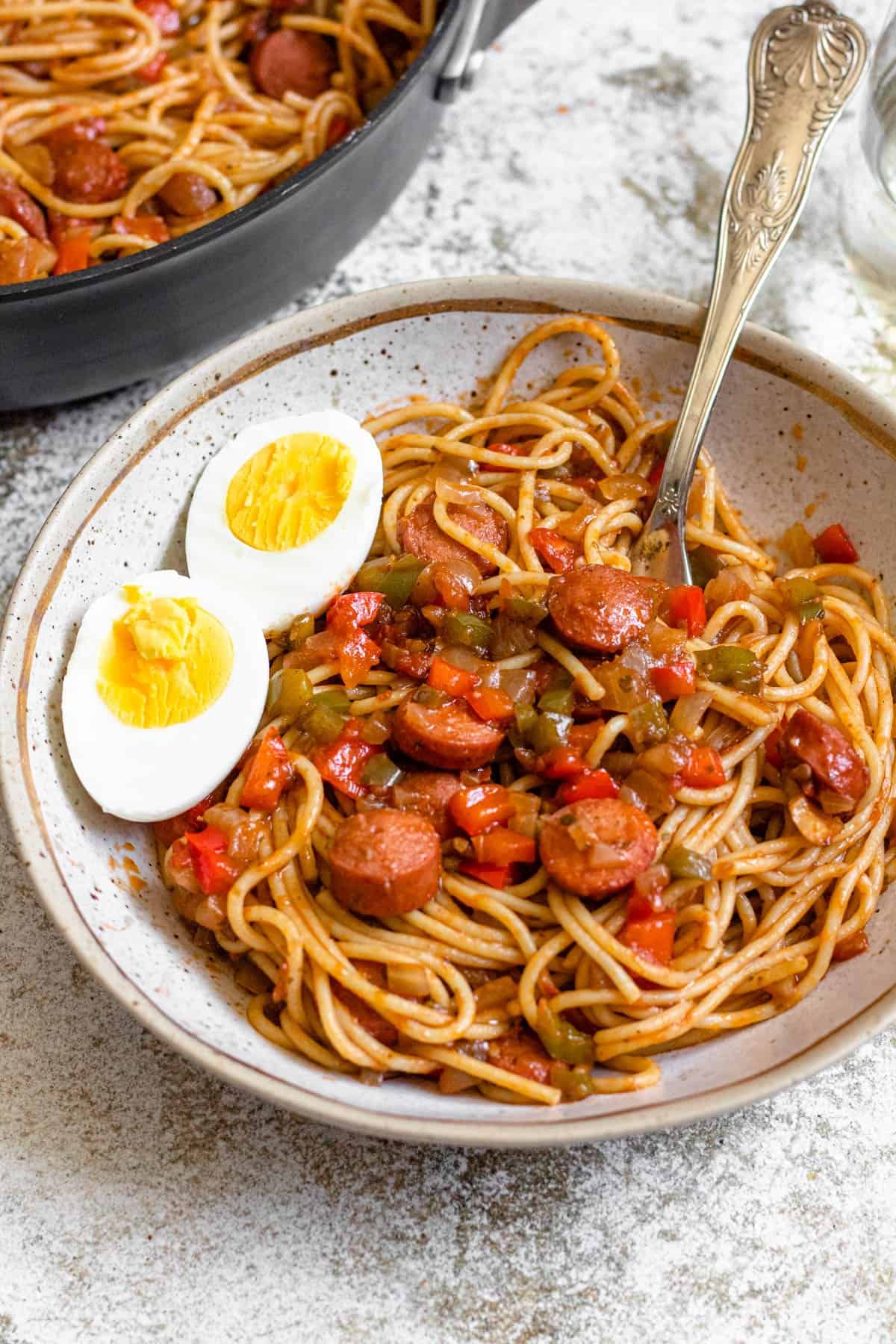
Haitian Spaghetti; Courtesy of The Foreign Fork
Tallarines Verdes (Peru)
Italian migration to Peru began around the mid-19th century, when around 15,000 Italians left a recently unified Italy in search of the economic opportunities of the guano trade. The first wave of migrants were Italian sailors from Liguria, who enmeshed many of the region’s food traditions with Peruvian culture, including recipes for their famous pesto alla genovese. They adjusted for ingredients on hand: spinach was added when there wasn’t enough basil, walnuts were used instead of pignoli, and queso fresco for Parmigiano. As the dish became ubiquitous throughout the capital of Lima, Peruvians began adding a splash of evaporated milk into the sauce for creaminess, evolving the Ligurian dish into something entirely different and wholly Peruvian. Tallarines verdes, which translates to “green noodles”, is usually enjoyed topped with a grilled bistec or milanesa (breaded steak or chicken, the Peruvian version of a cotoletta).
Ingredients: Spinach, basil, evaporated milk, walnuts, queso fresco; spaghetti (or sometimes linguine).
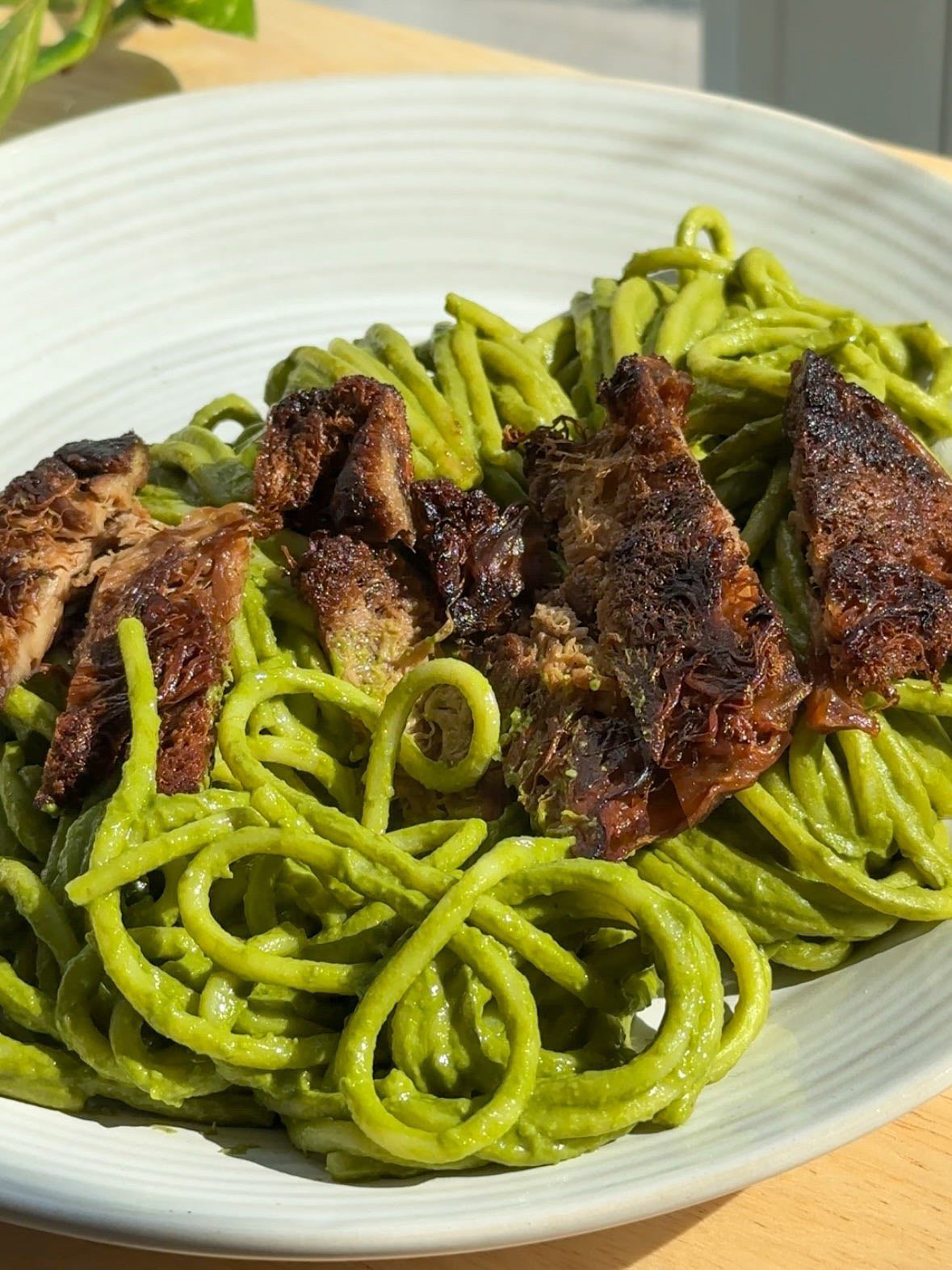
Tallarines Verdes; Photo by Raquel Ravivo
Espagueti Verde (Mexico)
In the late 1800’s, the Mexican government, led by Porfirio Diaz, organized a massive effort to bring Italian families to Mexico through land grants and other offers as part of a large-scale colonization project. From 1881-1882, they arranged the settlement of immigrant Italian families, primarily from Veneto, Liguria, and Trentino, in six agricultural colonies across the country, two of which were in the Mexican state of Puebla. These migrants ultimately influenced some of the country’s cuisine, and at some point in time, spaghetti became the centerpiece of a Pueblan dish known as Espagueti Verde. It makes use of the region’s famous poblano peppers, which are deseeded, deeply roasted, and slightly charred. The charred bits are removed and then blended with cilantro, mexican crema and a little bit of chicken stock. The result is a creamy green sauce with a deep, fresh green pepper flavor. The dish is popular across Mexican home kitchens: some cooks will add a jalapeño for a spicier kick, substitute the crema for cream cheese or evaporated milk, or add extra aromatics like garlic and onion.
Ingredients: Roasted green poblano peppers, crema, cotija or queso fresco, garlic, onion, cilantro, sometimes some chicken stock; spaghetti.
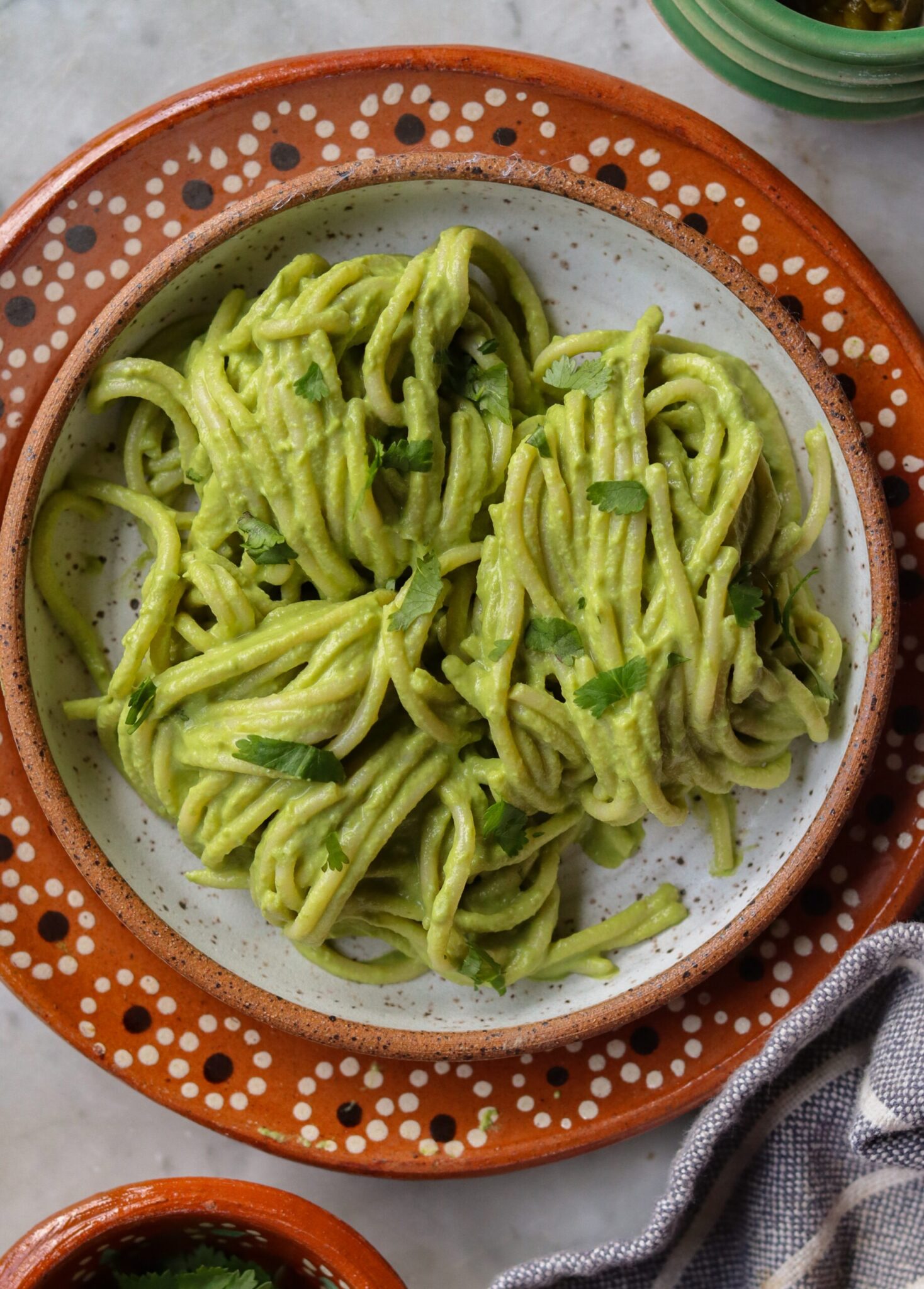
Espagueti Verde; Photo by Anna Rios
Spaghetti Beu Siga (Ethiopia)
Led by Mussolini and his imperial ambition, Fascist Italy launched a violent invasion of Ethiopia in 1935 and would occupy the East African country until 1941. During this dark chapter of Italy’s history, spaghetti and other pasta products began being manufactured in Ethiopia, and soon enough, pasta integrated into the local cuisine. With time, pasta dishes became as much a staple of Ethiopian cuisine as rice or the spongy, sour flatbread injera. Most ubiquitous of these pasta dishes is spaghetti served beu siga, or with meat. The sauce is a typical ragù with the notable addition of berbere, a fiery spice blend that usually includes cumin, coriander, fenugreek, allspice, paprika, ground chili peppers, and other aromatics native to Ethiopia. Some will top their spaghetti with spiced, clarified butter (niter kibbeh) or a fresh cheese, similar to farmer’s cheese. The result is a spicy, fragrant meat sauce that aligns with the Italian tradition but tastes unlike any Italian ragù you would ever eat. Sometimes it’s served atop or alongside injera so that, like many other popular Ethiopian dishes, you can eat the pasta with your hands.
Ingredients: Tomato sauce, ground meat, onions, garlic, carrot, berbere, clarified butter, soft farmer’s cheese; spaghetti.
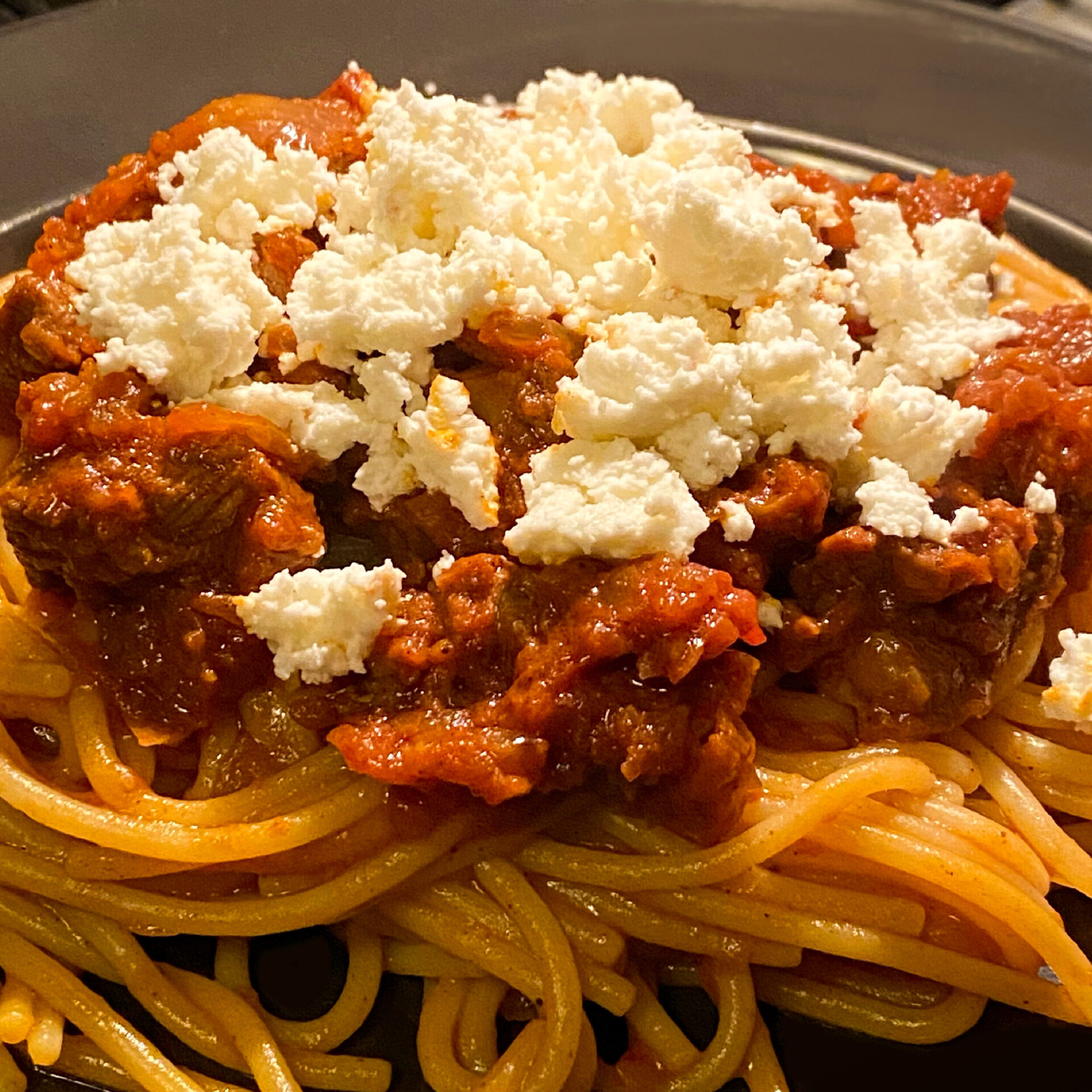
Photo by Karima Moyer of @historicalitalianfood
Keema Spaghetti (India and Pakistan)
Keema is a spiced ground meat (of any kind—lamb, beef, chicken, mutton) regularly prepared in home kitchens across the Indian subcontinent. There are many different ways one can make keema depending on the region. Some recipes are saucier and stew-like; some are drier; some add peas and potatoes; in Pakistan, they add tomatoes—but one thing is constant across every variation: keema is spicy. While the dish is normally served with rice, naan, roti, or a bread roll (pav), at some point in time, it became popular to serve atop spaghetti or macaroni. This likely dates back to the early 20th century, when British colonialists introduced a variety of European ingredients to India and Pakistan. Given the British introduction, packaged spaghetti and macaroni became integrated into some of the regional cuisines of the Indian subcontinent long before the arrival of any Italian pastas or pizzas. Today, keema spaghetti is seen as a satisfying meal for many families of South Asian origin, sometimes a great way to use up leftover keema from another meal, but always a quick dish to whip up for family or guests.
Ingredients: Ground lamb, beef, chicken, or mutton seasoned with spices like garam masala, cumin, coriander, turmeric, bay leaves; ketchup or tomatoes; spaghetti.

